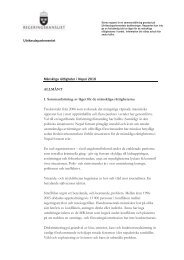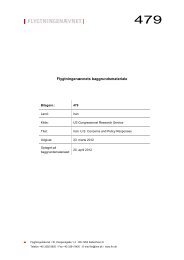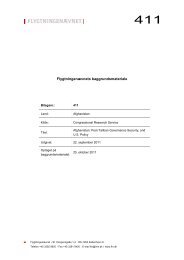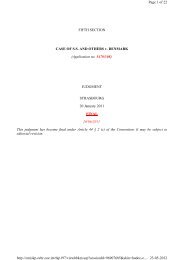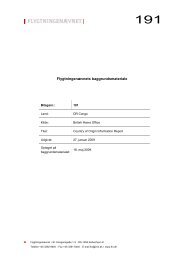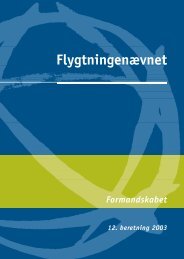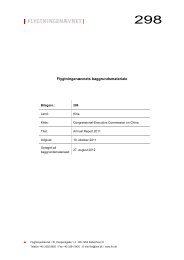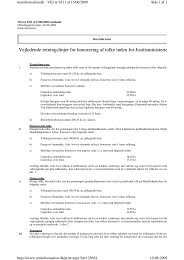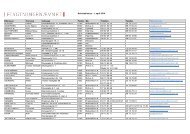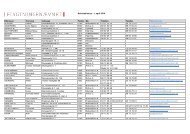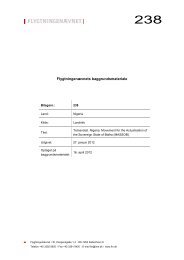Annual Report - National Human Rights Commission
Annual Report - National Human Rights Commission
Annual Report - National Human Rights Commission
Create successful ePaper yourself
Turn your PDF publications into a flip-book with our unique Google optimized e-Paper software.
Annexure 12<br />
○ ○ ○ ○ ○ ○ ○ ○ ○ ○ ○ ○ ○ ○ ○ ○ ○ ○ ○ ○ ○ ○ ○ ○ ○ ○ ○ ○ ○ ○ ○ ○ ○ ○ ○ ○ ○ ○ ○ ○ ○ ○ ○ ○ ○ ○ ○ ○ ○ ○ ○ ○ ○ ○ ○ ○ ○ ○ ○ ○ ○ ○<br />
○<br />
The second aspect of the definition should be its emphasis on exploitation - which<br />
could be physical, sexual or emotional.<br />
The third aspect of the definition should be its focus on the commodification of the<br />
trafficked person and the commercialisation of the activity by anybody. It should be allencompassing<br />
to include all types of violation of human rights and dignity and should<br />
include even customary activities which are exploitative, e.g., ‘dedicating a child’, and<br />
similar customs prevalent in certain places. All such activities of trafficking should be<br />
covered by the Act.<br />
(d)<br />
At times, it is possible that definitions can become too restrictive and, therefore,<br />
counterproductive. In such a situation, as an alternative, the difficulty can be solved by<br />
introducing a section giving legislative guidelines on what is intended to be achieved<br />
by the key words used in the statute and how the interpretation should go in favour of<br />
the victims when there are ambiguities.<br />
Redefinition of Brothel<br />
Considering the fact that commercial sexual exploitation of women and children has moved out<br />
of traditionally known brothels to beauty parlours, massage parlours, beer bars and other such<br />
places, it is essential to cover all such places under the ambit of the law.<br />
Definition of Child<br />
A child should be redefined, as in the JJ Act, 2000, to include all persons who have not attained<br />
18 years of age, and this definition should apply in all matters relating to children in all legal<br />
matters. It requires appropriate amendments in all concerned laws. Simultaneously, ITPA should<br />
provide for separate treatment (care and attention) of child victims and child offenders, in tune<br />
with the JJ Act, 2000.<br />
Section 2(f)<br />
This section of ITPA provides definitions of prostitution and prostitute. The definition should be<br />
amended to include both males and females.<br />
Section 2(g)<br />
This section of ITPA defines protective homes and other homes. These definitions must be in<br />
harmony with the definition of homes in the JJ Act, 2000. Secondly, the definition of corrective<br />
homes needs to be changed. If Section 2(b) of ITPA is read with 2(g) ITPA, the corrective home<br />
defined in 2(b) appears to include jails/prisons. The concept of corrective home is different from<br />
incarceration or punitive detention centres. The term needs to be redefined to include the social<br />
philosophy of the Act. As Justice V.R. Krishna Iyer says, there must be “a dynamic set of definitions<br />
dealing with correctional, curative, protective and salvationary institutions. There must be stress<br />
in preliminary classification, categorisation, psychological diagnosis and observation before<br />
294<br />
<strong>National</strong> <strong>Human</strong> <strong>Rights</strong> <strong>Commission</strong> <strong>Annual</strong> <strong>Report</strong> - 2004-2005<br />
AR-Chapter-1-19-10-6-06.p65<br />
314<br />
7/17/06, 6:31 PM



